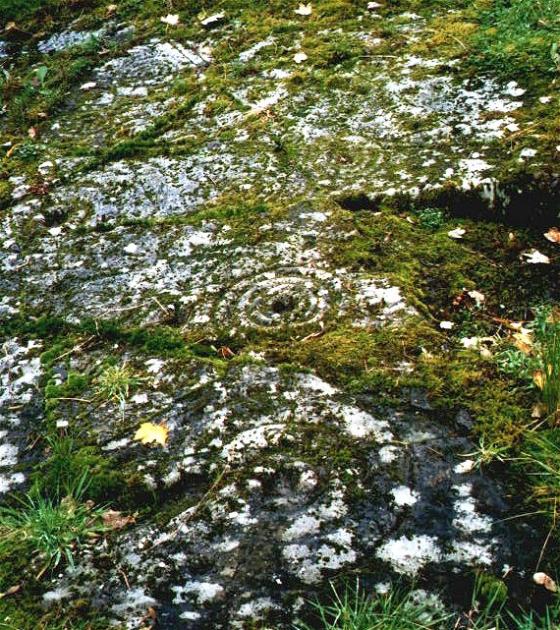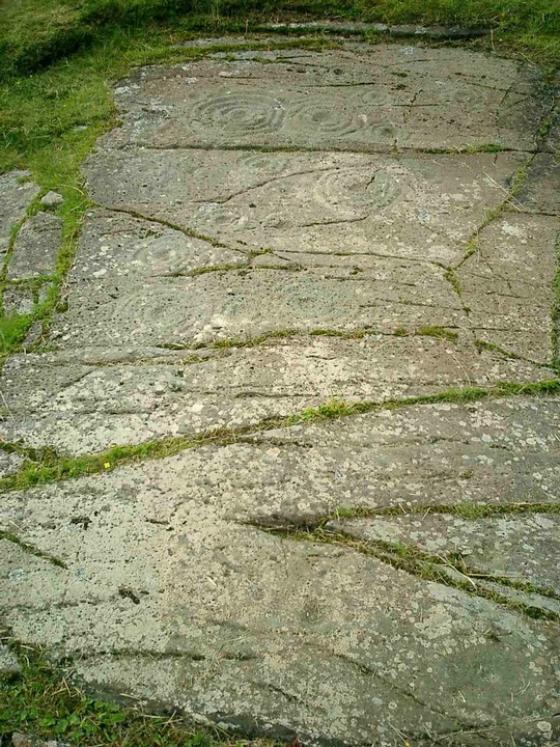





Looking SW from halfway up the ridge with Crinan Harbour in the background. The main panel with rock art lies between the two trees. The Dun on the right of the farm is clearly visible.

View over a decorated outcrop rock (right) West of the ridge and near the sea

Faint motifs with gapped rings on the outcrop rock near the sea, West of the ridge

Cup-marks on the lower part of the ridge

A big cup with a half ring lying in the middle of the ridge


The largest panel of rock art, just halfway up the ridge, between the two trees.

Detail of the cups with one ring on the main panel.

Overview of the main panel
We visited this secluded location in May 2003 with permission of the landowner. The motifs are on a ridge running SW/NE from the (Iron Age) Dun just West of the farmhouse to a Dun higher up the ridge. Most of the carvings are faint. However, this is a wonderful place with wide views.
My favourite type of folklore – rock art folklore. Or at least, I think it’s a fair guess to say that’s what this story refers to.
The Hoof-prints of Scota’s Steed at Ardifour Point.
At the mouth of Loch Craignish, but on the Kilmartin side of the loch, is the farm of Ardifour. One side of this farm faces Loch Craignish, and another Loch Crinan. Between the two lochs is a point where there are deep indentations in the rock, which bear some remote resemblance to the hoof-prints of a horse. How were these formed? A geologist could easily answer the question; but legend also has its own way of solving the difficulty.
Scota, the daughter of Pharoah, King of Egypt, came over from Ireland, and having entered the mouth of Loch Crinan, drew up her ship opposite Ardifour Point. She then mounted her steed, shook the reins, and thus urged the high-mettled animal to spring from the deck on to the distant point; and so violent was the shock that the hoofs of the horse sank deeply into the rock, and left behind them those marks which are still to be seen at Ardifour.
From ‘Waifs and Strays of Celtic Tradition’ (Argyllshire series) by Archibald Campbell (1889).
Rock art UK’s photo here isn’t totally unlike four hoofmarks?
At least 11 groups of cup- and cup-and-ring markings lie in the valley to the north of Ardifuir farmhouse. Grid references, taken from RCAHMS’ “Kilmartin Prehistoric & Early Historic Monuments, an inventory of the monuments extracted from Argyll volume 6” are:
NR789970, NR789969, NR790970 (six at this reference), NR790971, NR788970 (two at this reference)
Ardifuir on BRAC Updated










































































































































